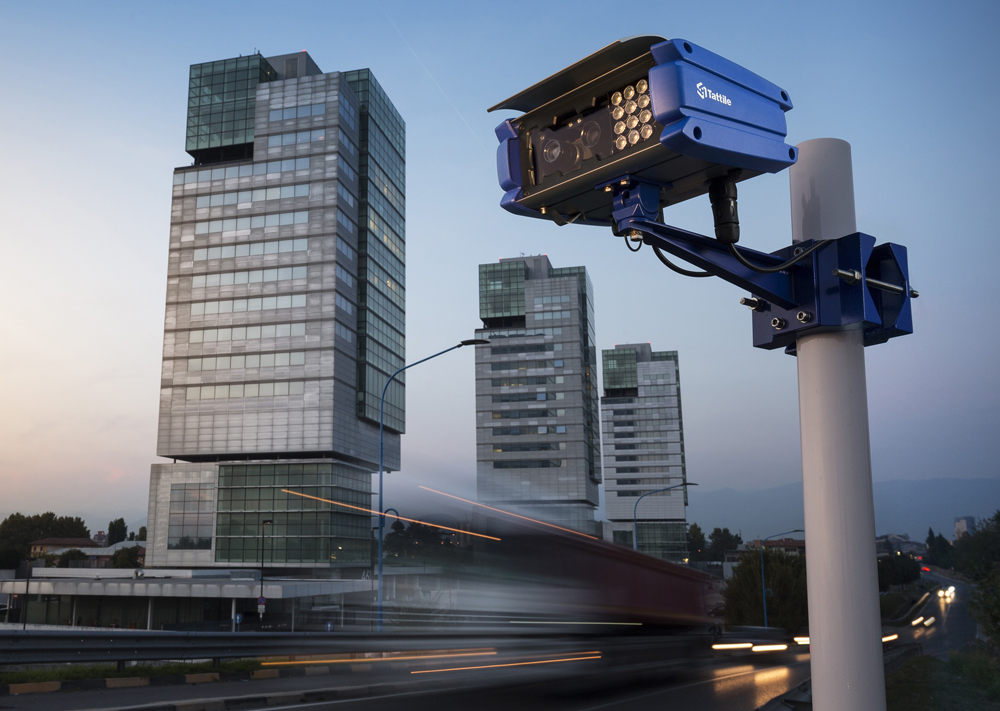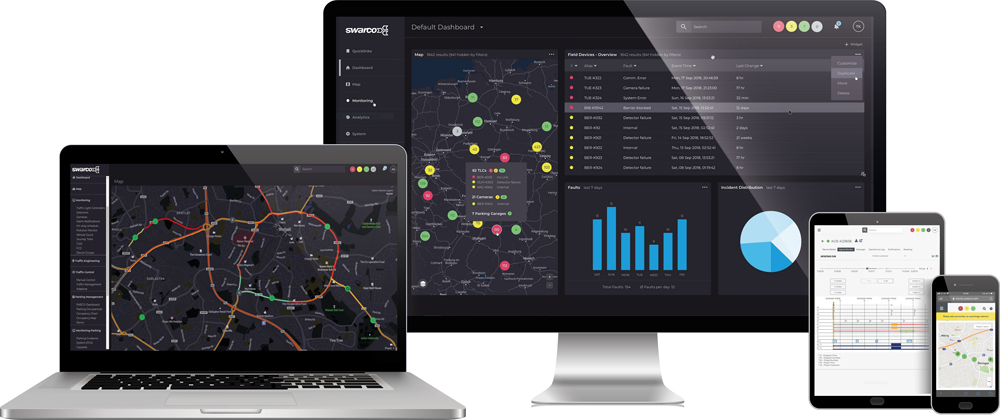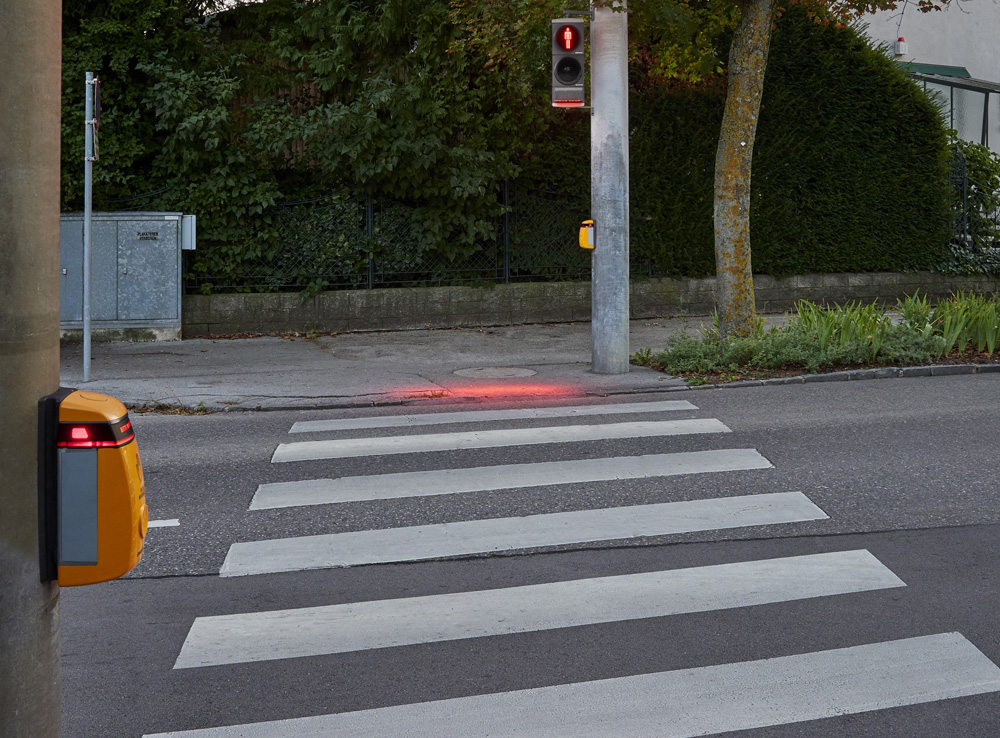
How to engage people’s attention in the modern world? Specifically, how to alert them to potential hazards when they are walking on busy streets and engrossed in their thoughts or with the technological distractions so prevalent today?
Something is needed to cut through the clutter when looking at a phone screen or listening to music. Something sufficiently striking as to alert pedestrians to hazards, but not so obtrusive that it jars with nearby residents or becomes an annoyance.
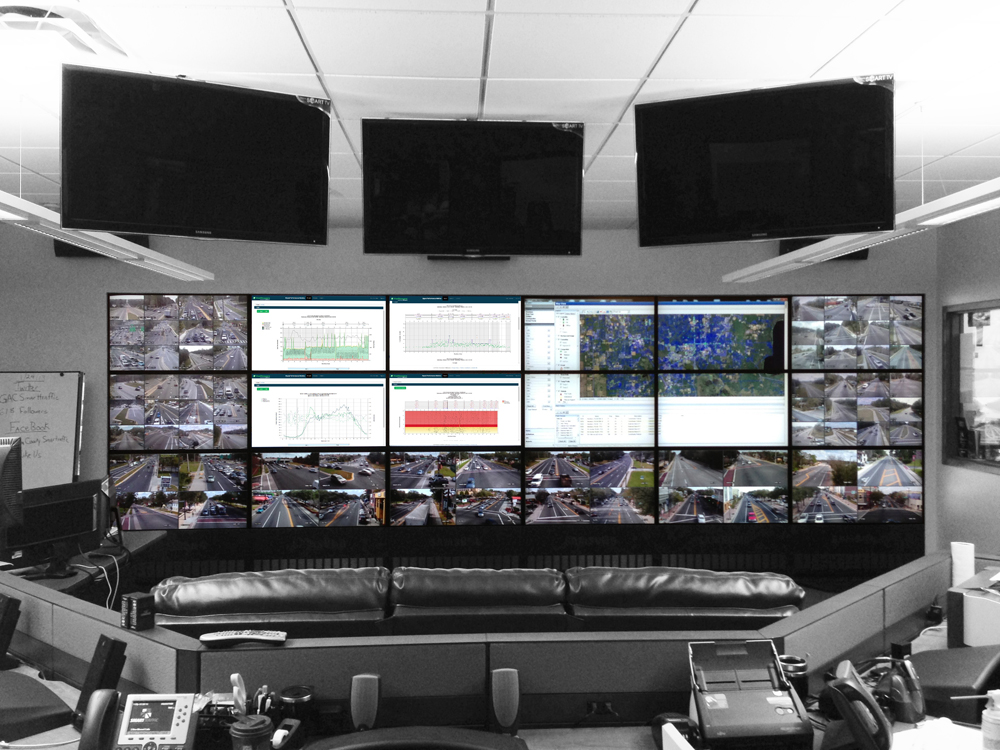
Vulnerable road users (VRUs) are in jeopardy when they fail to notice traffic signals as they cross a road; the potential outcome is obvious. However, when that red light is utilised in a new way, it can overcome the problem.
This issue has been engaging the attention of Austrian traffic technology group Swarco, which hopes that one innovation will potentially prevent injury or death among otherwise-occupied pedestrians.
“The problem is that people don’t pay attention anymore,” lamented Richard Neumann, Swarco’s head of communications and marketing. “There’s a new type of person that has become known as a ‘smombie’”. This is a ‘smartphone zombie’ who is distracted by their phone and/or music in their headphones.
In a measure aimed at helping prevent accidents at intersections with traffic lights, Swarco is now offering an add-on to its Combia traffic lights in the form of SafeLight.
Shine a light
A simple addition, SafeLight is a half-chamber on the set of lights that shines a red light down on to the pavement next to the traffic light pole.
This light produces a reflection on a smartphone’s screen, with the intensity of
the light making it difficult to ignore. Someone seeing a red caste settling on to their screen is almost certain to look around to discover its origin and become more
aware of their surroundings when they realise it is coming from the set of traffic lights beside them. Or, as Neumann puts it, “So they are woken up.”
The light is projected down on to the ground around the traffic light pole and its width can be adjusted to the customer’s requirements – for example, to cover a pedestrian crossing. As the traffic light turns green, the red glow disappears.
SafeLight is normally ordered with the Combia as an integrated system. It can be retrofitted, but its functionality is then more limited as the chamber producing the downward glow will not be in the same housing as the traffic lights.
Initial sales of SafeLight have been made to Austria and Saudi Arabia, and the system has been installed at critical intersections in Zagreb, Croatia. Feedback is limited so far, said Neumann, but he believed that people appreciated the innovation as it alerted pedestrians and prevented accidents.
According to The Voice of Croatia radio station, a survey conducted by the Croatian Association of Security Managers (which is leading efforts to reduce the number of accidents caused by mobile phones in traffic) found that fully 50% of pedestrians talk on their phones while crossing the street.
If that number is representative of modern behaviour by pedestrians more widely, then features like SafeLight have the potential to awaken a lot of people from their electronic stupor and prevent injury - or worse.
The Traffic Signing Institute at the University of Zagreb’s Faculty of Transportation Sciences is currently looking at pedestrian behaviour in relation to mobile phone use when crossing intersections and is to undertake research on the effect of traffic light modes on pedestrians.
Intelligent functionality
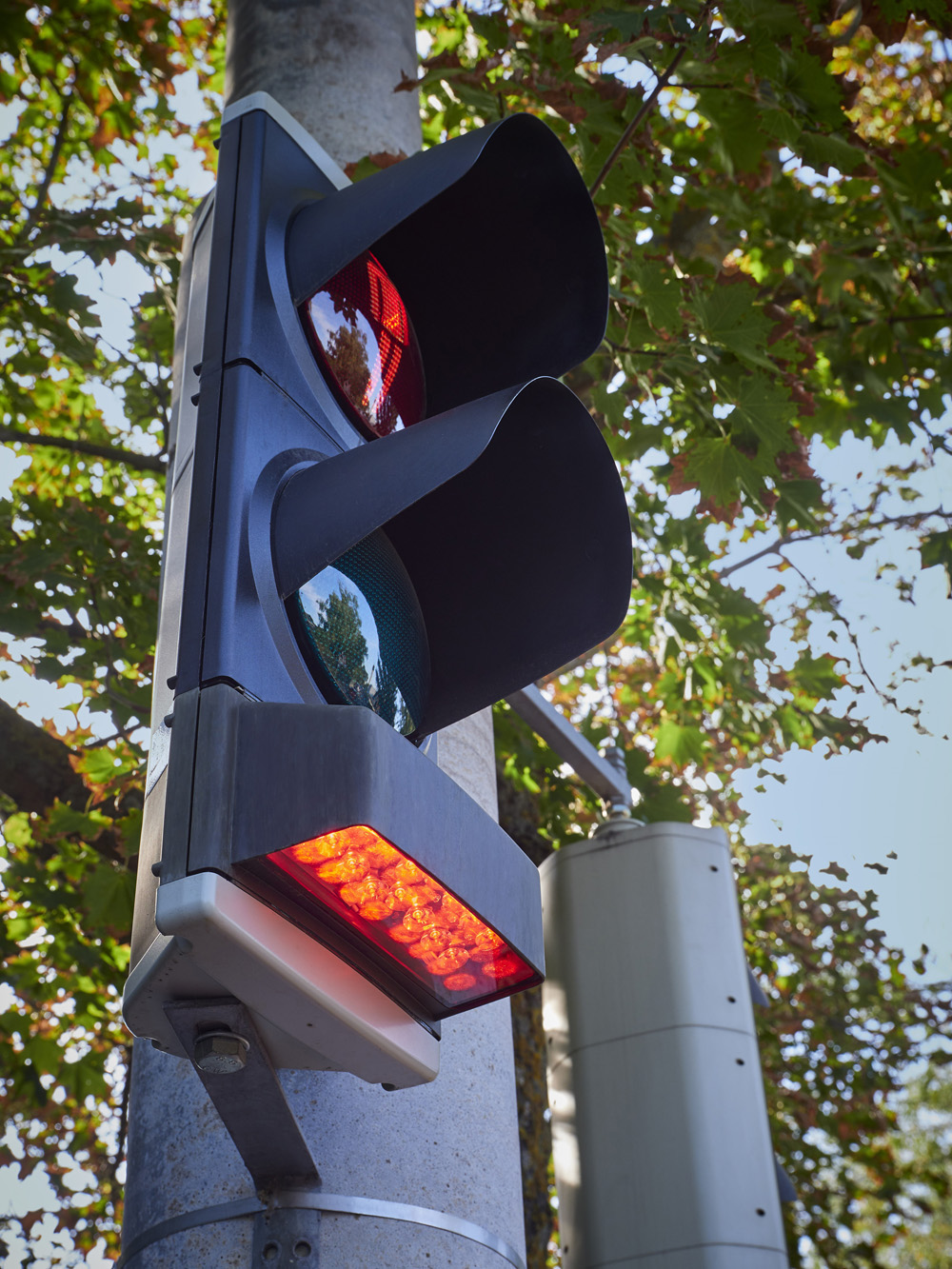
Neumann believes that organisations are looking at traffic lights to do more than their traditional functions. “The functionality [of traffic lights] must not only be red-amber-green,” he insists. “We can do more with it, make it a little bit more intelligent. We can detect pedestrians or monitor the air quality, et cetera.”
The system is one of several innovations that increasingly make use of sensors and computing taking place at the edge, at individual points on a network, rather than via a centralised system. This allows new functions to be added at particular intersections – for example, at known accident blackspots – rather than having to install a new system into a central traffic management system, with all the complexities of creating multiple interfaces that this entails.
Swarco is taking advantage of this trend by adding new capabilities to individual traffic lights. Its Combia family, for example, can include PedCom, a built-in sensor to detect pedestrians near to the traffic lights and the subsequent re-phasing of the lights in their favour.
Although not a safety measure per se, a further innovation due later this year is AirDec, an environmental station on the traffic light that detects environmental parameters such as pollutants (including carbon dioxide, nitrogen oxide and sulphur dioxide), temperature and noise in the immediate environs.
Other companies are also aiming to improve road users’ experience at junctions – but this time Parsons’ Intelligent Intersections solution is for motorists rather than pedestrians.
“There are more than 4,000 small cities in the US between 5,000-100,000 population level that oftentimes have as much congestion as the largest cities,” noted Andrew Liu, senior vice-president of Parsons’ Smart Mobility Group.
The company has been deploying advanced traffic management systems (ATMS) for state departments of transportation for more than 25 years, said Liu, which has brought with it long-standing experience in re-timing signals, managing congestion and smart mobility.
Keeping pace
As cities grow and traffic flows change, intersection traffic light phasing often needs to be changed to keep pace. Traditionally, this has been a manual process, which takes time and, inevitably, money.
“This process can become expensive, manual and inefficient,” said Liu. “On average, cities hire a company to re-time signals once every five years.”
Parsons says its new Intelligent Intersections system gives city traffic authorities the ability to re-time traffic signals much faster and thus less expensively. The system also means they can be re-timed much more frequently, if developing traffic patterns require it.
With the new system, “if a city wants to retime signals every two to three months, they can”. Changes to the signals are calculated in the cloud and the system can then make the re-timings automatically.
The system uses data gathered by sensors such as loop detectors and stop bars at individual intersections, as well as traffic data from connected vehicles.
That data is then processed by a proprietary algorithm; the resulting information can be displayed to control centre staff on a dashboard to allow traffic engineers to visualise what is happening out on the streets in real time, notably in graphical map format including a ‘heat map’ of traffic, so it is readily apparent where problems are occurring.
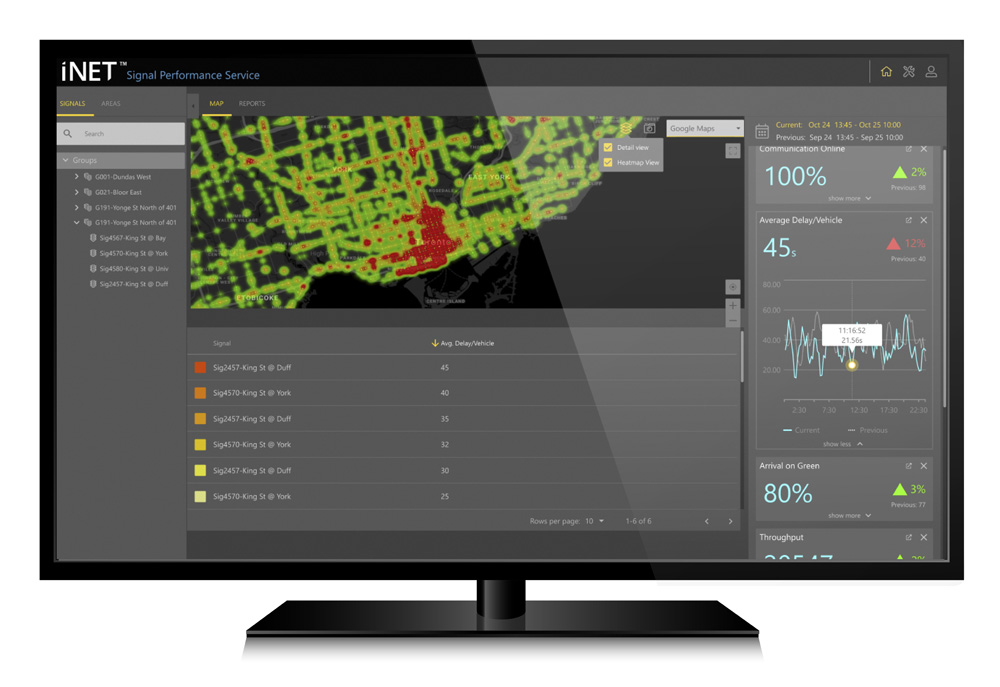
With that information, it becomes obvious where a re-timing of traffic lights would create improvements in travel times across a city. The system provides recommendations for signal re-timing. Signals can be re-timed automatically by the push of a button, says the company.
Options include re-timing through each individual intersection controller or by integrating the re-timing solution through a city’s centralised traffic management system. “We’ve made our system agnostic to the type of traffic management system used,” said Liu.
Additionally, the system can re-time signals in one particular district or across the wider network.
With many cities having ATMS already in place, Intelligent Intersections has been designed to be capable of interacting with legacy systems, he added. “We sit on top of existing systems. As long as there is communication with the traffic controller or via the central management system, we can talk to all of the intersections.”
Cloud provider
Parsons has partnered with Amazon Web Services as the cloud services provider, “so we do not have to integrate with client data centres or set up expensive infrastructure, making this a frictionless cloud subscription service for cities”. As the problem-solving is done in the cloud, the system is easily scaleable.
Parsons believes that updating the timing on intersection lights can reduce traffic delays from 15%-40%. It also thinks it can make a contribution to cutting the estimated 30 million tonnes of greenhouse gas equivalents which idling cars emit annually by 4.9 million tonnes through better signal timing.
Also aiming to improve the commuter experience and traffic flows is Trafficware’s ATMS 2.10. Like Intelligent Intersections, the latest variant of ATMS, released in May, makes use of real-time data from traffic infrastructure. A shift to edge computing improves the accuracy and resolution of traffic information so communities can deliver streaming traffic data with sub-second accuracy, says the company.
A major update to ATMS 2.10 provides connected vehicle technology as a standard feature. It follows the modern pattern of making use of data generated by edge computing technology at individual locations around a town or city, rather than from a central traffic management centre.
ATMS 2.10 incorporates as a standard feature TidalWave, which allows access to real-time data delivered from traffic infrastructure. TidalWave sends live intersection data from the infrastructure to vehicles. This allows optimal routing of a vehicle using predictions of traffic light behaviour at intersections and the weight of traffic using them.
Incorporating TidalWave into Trafficware ATMS 2.10 means that agencies upgrading from earlier versions of the system will automatically gain the added functionality. And as TidalWave is a cloud service, it will not affect a city’s existing traffic management infrastructure. It is also a pure software service, with no hardware required by a city acquiring it for the first time.
“ATMS 2.10 is an upgrade or release by which, if you’re current on ATMS support, we provide to our agencies at no charge,” said Joe Custer, Trafficware’s general manager. “There are two releases a year. We have over 300 ATMS systems deployed permanently in the US and around the world and 20 are already scheduled to upgrade to 2.10. Of these 20 we have 12 utilising TidalWave today, with five more in our backlog to bring on.” Trafficware is deployed at more than 50,000 intersections globally.
Live data
If a city is using dedicated short-range communication (DSRC) to link infrastructure to vehicles, it requires roadside and on-board equipment. However, said Custer, the software nature of Trafficware ATMS 2.10 meant that once it was enabled, it used the cloud to communicate with vehicles, operating on cellular-based networks, with which many new cars were already equipped. This cut out the need for hardware.
Live data from an intersection – for example, from magnetometers or video detection – is passed into the cloud and back to vehicles in the vicinity in less than one second, said Custer. This enables optimal vehicle routing using predicted intersection behaviour and traffic load.
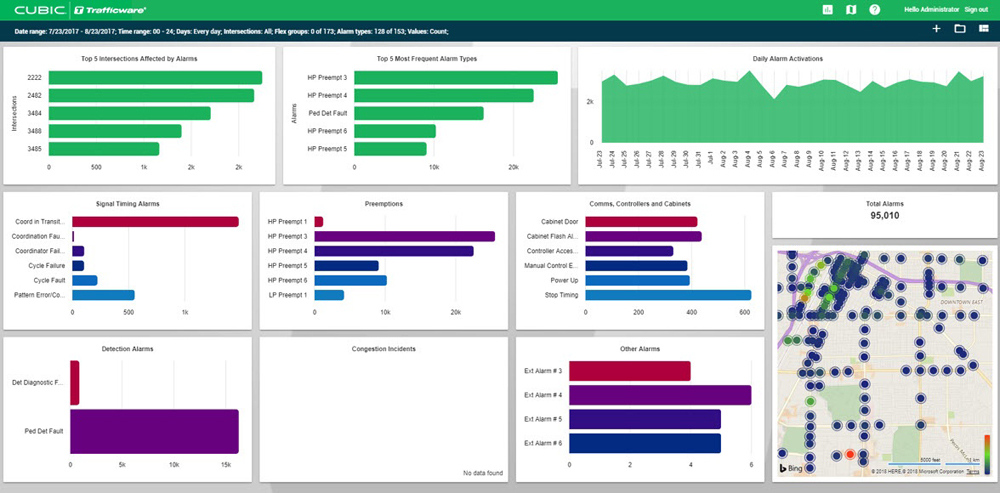
“If you’re going down a city block, on average it’s three to five seconds to go from one block to another. If I’m able to provide that driver with information in less than one second, I now have a better-informed driver. It could be that the light is about to turn yellow or red and I can let off the accelerator.” Trafficware believes that no other company currently produces similar equipment with such low latency.
One benefit for drivers is that they will be able to receive predictions of how fast they should travel – assuming it is within the speed limit – to catch the green light at the next intersection. If this can be extended to allow drivers to surf ‘the green wave’ through a series of intersections, allowing for a smoother, faster flow of traffic, “That’s a big deal,” he said.
The 2.10 upgrade of Trafficware also integrates with a Gridsmart Smartmount fisheye camera to provide additional information on individual intersections, while vulnerable road users such as cyclists or pedestrians can be catered for by a Pedestrian Phase Extension to the intersection traffic lights that allows them more time to cross, said Custer.
One of the next stages for ATMS is likely to be the incorporation of artificial intelligence and machine learning, a capability that is currently under development, he added.
These measures to smooth traffic flows, save time – and, potentially, lives – may be taking place at the edge of traffic management systems, but are increasingly central to both the safety and ease of travel of road users.
ABOUT THE AUTHOR:
Alan Dron is a freelance journalist working in the transport sector and regularly reports from major ITS events.





